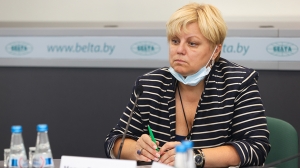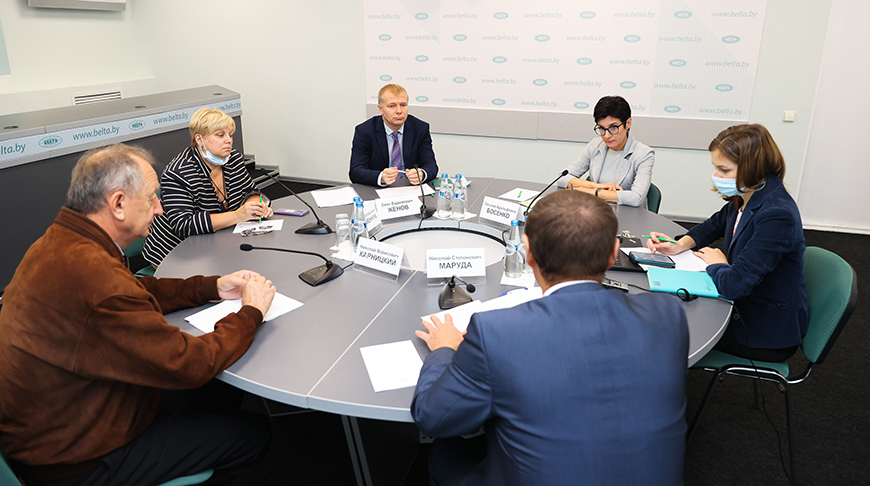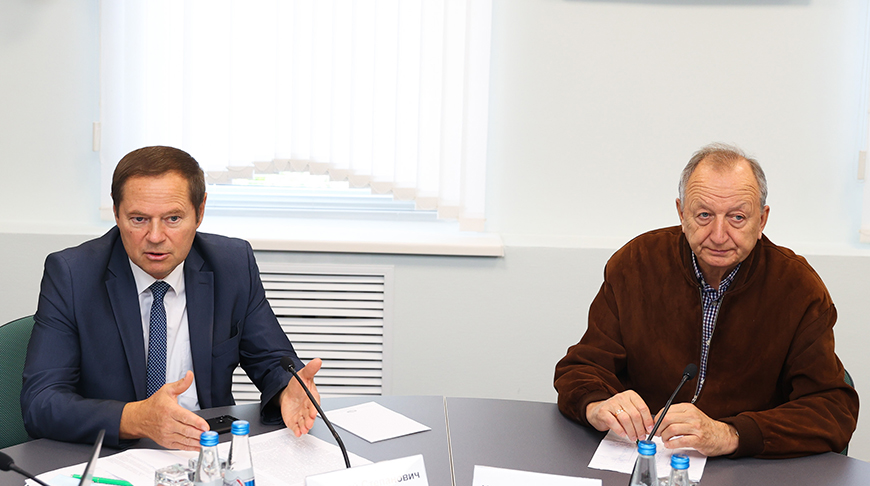Belarusian nuclear industry personnel training standards praised

MINSK, 16 December (BelTA) – The training of personnel for Belarus' nuclear industry is excellent, experts noted during an online conference hosted by BelTA's website.
Maria Germenchuk, Deputy Director for Science of the International Sakharov Environmental Institute of the Belarusian State University, said: “Training our own personnel for the nuclear industry (professors, researchers) is a strategic goal of the Belarusian State University. We have three main growth points from the point of view of personnel training. The Physics Faculty and the Nuclear Energy Physics Chair are at the forefront. Then there are also the Chemistry Faculty and its radiochemistry lab. In September the university decided to start postgraduate education courses in the sphere of nuclear and radiation safety as part of the Chemistry Faculty. As for the International Sakharov Environmental Institute, it was originally established as a radioecology college. Requirements for personnel changed after the accident at the Chernobyl nuclear power plant. Specialists with knowledge of ionizing radiation's impact on the environment and people were sought. Our institute started training various specialists in the field of nuclear and radiation safety then.”

Regional courses for training radiation safety specialists are arranged at premises of the International Sakharov Environmental Institute in Belarus every two years under the aegis of the International Atomic Energy Agency (IAEA). “Belarus broadcasts the IAEA's recommendations onto the Soviet Central Asia and other Russian-speaking countries. In other words, we've already acquired a considerable standing in the International Atomic Energy Agency not only as someone, who fulfills recommendations, but as someone, who is becoming a mentor. It indicates our really high teaching standards. And we are proud of it,” she stressed.
Speaking about the number of potential students vying for nuclear and radiation safety jobs, the official noted: “We don't want, figuratively speaking, 100 people for one student position because there will be 99 accidental people among them then. First, it is important to admit people with good physics and math training. Second, we are very attentive to the resilience of people to stress, to their ability to take responsibility. We try to instill the necessary professional competences.”
Nikolai Karnitsky, Head of the Thermal Power Plants Chair of the Energy Faculty of the Belarusian National Technical University (BNTU), informed those present about how the university trains personnel for the nuclear industry. “Our history of training engineers for the nuclear industry began quite a long time ago. Today I can name many of our graduates who work at nuclear power plants, in particular at those located in Smolensk, Rostov, the Kola Peninsula, and also at the Belarusian nuclear power plant. In 2020 we introduced a new specialization ‘Design and exploitation of nuclear power plants'. The word ‘exploitation' includes installation, tuning, repair of equipment. As for the design, a nuclear power plant is designed to operate for many decades. The design period is 60 years, then the operating lifetime gets extended. Therefore, in the end, taking into account the decommissioning process a nuclear power plant is a facility that operates for a century,” he stated.

On the whole, there are many aspects of nuclear industry personnel training at the Belarusian National Technical University. Leading professors are invited to lecture students, the labs are developed, textbooks are prepared, literature is bought for students, and training via simulator operation is also available.
“We support the idea of employer-sponsored education. We want young people to make an informed choice about their future careers. There are not many people like that, however, they see how hard their parents work at power plants and make an informed choice. It is very important. We welcome dynasties,” Nikolai Karnitsky said.
Speaking about internship opportunities for students in foreign countries, Nikolai Karnitsky said: “We organize internships at four Russian nuclear power plants – in Smolensk, Rostov, Kalinin, and Novovoronezh. Despite the pandemic this year our guys have gone through internship at the Novovoronezh nuclear power plant and have visited a power plant in Nizhny Novgorod together with the Belarusian State University of Informatics and Radioelectronics (BSUIR). If we talk about non-CIS states, we can send students to the Mochovce nuclear power plant in Slovakia, the Kozloduy nuclear power plant in Bulgaria. We also send the students to the International Atomic Energy Agency. There is a mothballed nuclear power plant not far from Vienna. It needs only nuclear fuel. Apart from that, our professors have repeatedly taken internships at the International Atomic Energy Agency, in France. The relevant certificates are available,” he summarized.













